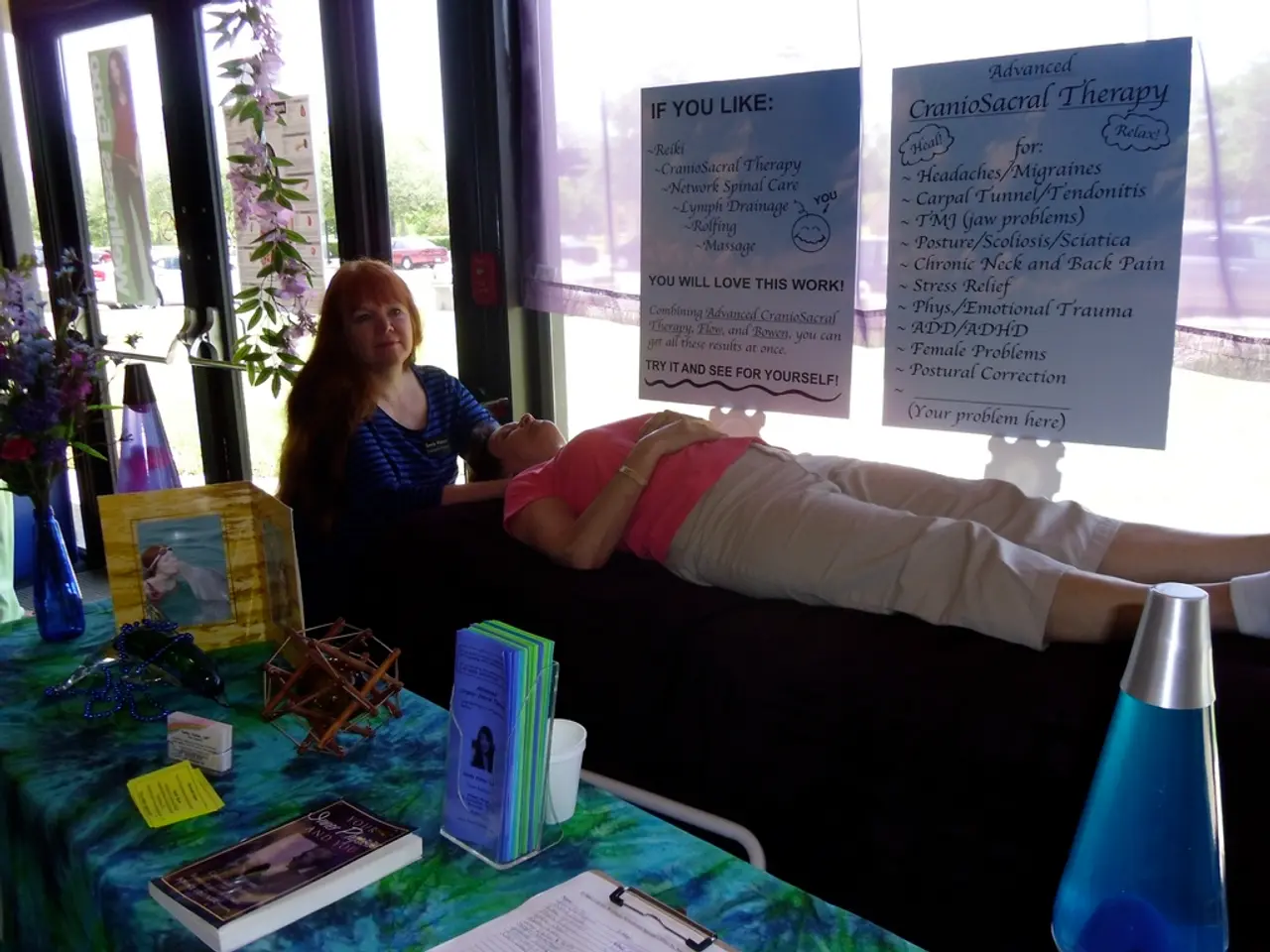Connection between Exercise and Depression: Insights, Therapies, and Further Exploration
In a groundbreaking development, current scientific evidence strongly supports exercise as an effective treatment for depression. Multiple systematic reviews and meta-analyses have demonstrated that various forms of exercise significantly reduce depressive symptoms compared to control conditions [1].
A key finding is the robust effect of aerobic exercise, both moderate and high-intensity, in reducing depression symptoms. Standardized mean differences (SMD) indicate moderate to large effects, with SMD ranging from -0.47 to -1.02 in children, adolescents, and adults [1]. A meta-analysis of 41 studies with over 2,200 participants found large effects favouring exercise interventions, with an SMD of -0.946, even in people diagnosed with major depressive disorder [2].
Various modalities of exercise, including walking or jogging, yoga, strength training, mixed aerobic exercises, and tai chi or qigong, all showed moderate reductions in depression severity. Strength training and yoga were among the most acceptable and well-tolerated forms [4].
The benefits of exercise are consistent regardless of comorbidities or baseline depression severity, and its effects are comparable to other established treatments like psychotherapy and antidepressants, making exercise a valuable adjunct or stand-alone option [4]. Institutions like Harvard Medical School and the NIH endorse exercise as a significant non-pharmacological intervention for depression management [3].
Exercise can reverse the effects of depression on the body by regulating appetite hormones, improving sleep quality and duration, and reducing inflammatory responses. Depression can reduce a person's quality of life and lead to changes in lifestyle choices, including less physical activity. However, exercise can enhance a person's chances of living longer [5].
It's important to note that the effects of exercise on depression may vary between males and females, with some research suggesting that exercise may have different effects in different sexes [6]. Exercise can improve older adults' ability to perform daily activities and prevent dangerous falls [7].
However, there is no set effective amount of exercise that will produce a result in people with depression. A 2018 study found that exercise leads to a 20-40% reduction in depression symptoms compared with a person's usual treatment [8]. Depression can cause lasting feelings of sadness and emptiness, a lack of energy, and a decreased ability to concentrate [9].
The link between these factors and depression may be bidirectional, meaning that depression can make these factors worse, and these factors may also impact depression. Exercise can improve circulation and strengthen the cardiovascular system, which may be more impacted in people with depression [10].
Depression affects more than 264 million people worldwide according to the World Health Organization [11]. Anyone considering using exercise as a therapy for depression should talk to their doctor first to discuss personal risks and find an exercise program that works for them. It's worth noting that exercise as a treatment for depression has an 18% dropout rate [12].
People with depression tend to have higher rates of tobacco and alcohol use, poorer nutrition, and a higher chance of overweight [13]. There appears to be an increased benefit for people who engage in aerobic exercise in groups and with an instructor [14]. People with major depression have about a 10-year shorter life span than people without depression, after excluding deaths by suicide [15].
Depression is associated with atherosclerosis and cardiovascular disease [16]. It's crucial to remember that while exercise is a powerful tool in the fight against depression, it should be used in conjunction with other treatments and under the guidance of a healthcare professional.
Treatment seekers looking for alternative strategies to manage their mental health may find solace in the science backing exercise as a viable health-and-wellness intervention. Evidence from multiple studies supports the use of exercise as an effective adjunct or stand-alone option, demonstrating significant reductions in depressive symptoms, particularly through aerobic exercise, strength training, and yoga.




